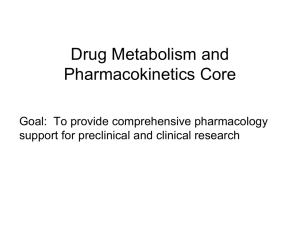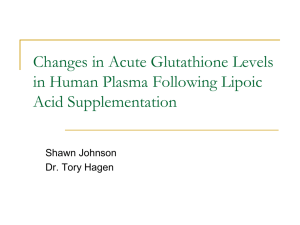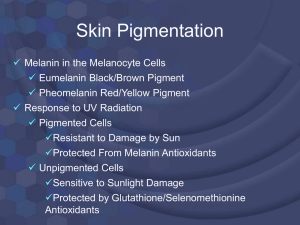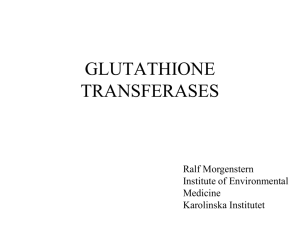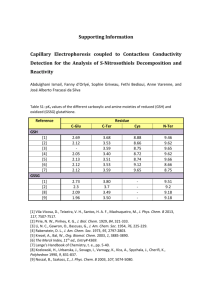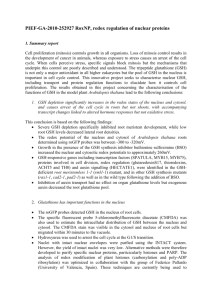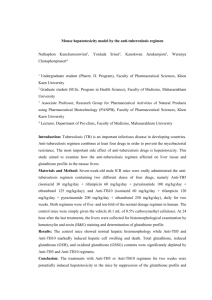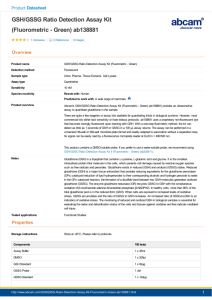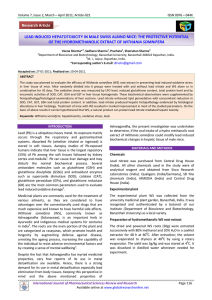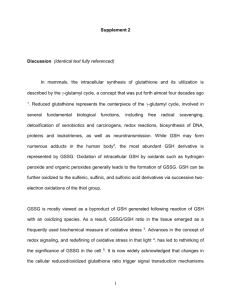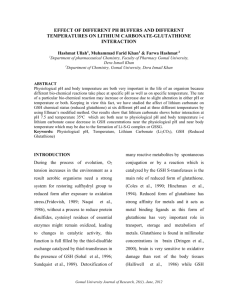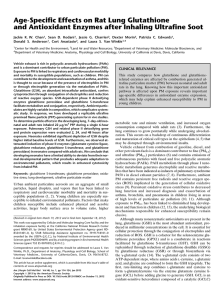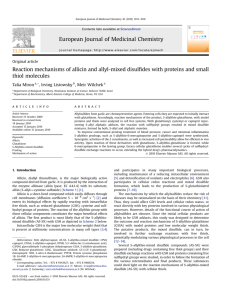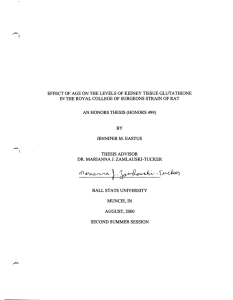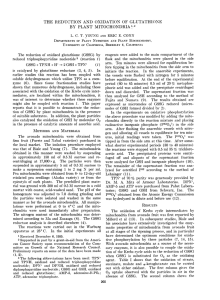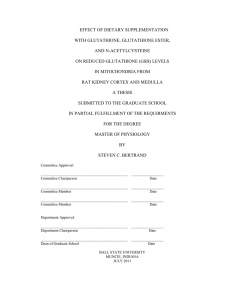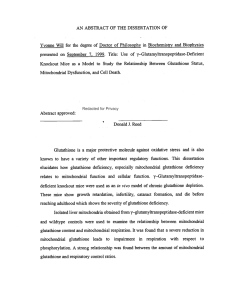Supplementary Information (doc 34K)
advertisement
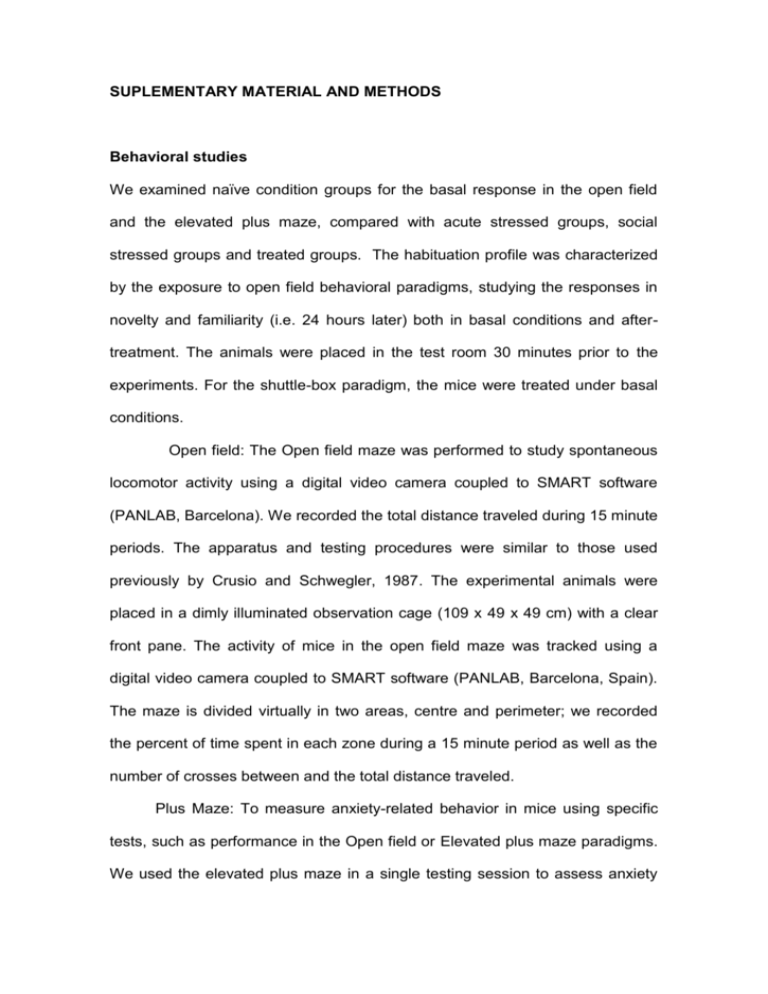
SUPLEMENTARY MATERIAL AND METHODS Behavioral studies We examined naïve condition groups for the basal response in the open field and the elevated plus maze, compared with acute stressed groups, social stressed groups and treated groups. The habituation profile was characterized by the exposure to open field behavioral paradigms, studying the responses in novelty and familiarity (i.e. 24 hours later) both in basal conditions and aftertreatment. The animals were placed in the test room 30 minutes prior to the experiments. For the shuttle-box paradigm, the mice were treated under basal conditions. Open field: The Open field maze was performed to study spontaneous locomotor activity using a digital video camera coupled to SMART software (PANLAB, Barcelona). We recorded the total distance traveled during 15 minute periods. The apparatus and testing procedures were similar to those used previously by Crusio and Schwegler, 1987. The experimental animals were placed in a dimly illuminated observation cage (109 x 49 x 49 cm) with a clear front pane. The activity of mice in the open field maze was tracked using a digital video camera coupled to SMART software (PANLAB, Barcelona, Spain). The maze is divided virtually in two areas, centre and perimeter; we recorded the percent of time spent in each zone during a 15 minute period as well as the number of crosses between and the total distance traveled. Plus Maze: To measure anxiety-related behavior in mice using specific tests, such as performance in the Open field or Elevated plus maze paradigms. We used the elevated plus maze in a single testing session to assess anxiety behavior as a response to this novel situation that produces unconditioned avoidance responses towards the open arms. A trained observer, blind to the genotype, records the time spent in each area of the elevated plus maze for 5 minutes (Lister, 1987). Briefly, it consisted of 2 open and 2 closed arms (all arms, 30 x 5 cm) and made of Plexiglas. The 2 open arms were surrounded by 4-mm-high ledges. Closed arms had 14.5-cm-high Plexiglas walls at the sides, but open at both ends. The floor was painted black and elevated to a height of 45 cm. Each mouse was placed in the central square (5 x 5 cm) facing an open arm, and allowed to explore the maze for 5 min, during which time a video tracking system recorded its behavior. The following variables were analyzed: time spent in the open arms, closed arms, and central square; open arm entries and closed arm entries (both the absolute number and as a percentage of total arm entries). The maze was thoroughly cleaned with a dry cloth between sessions. Fear conditioning paradigm (Phillips and LeDoux, 1992). Mice were individually placed in a clear, Plexiglas conditioning chamber (Med Associates, E. Fairfield, VT) for training. A tone [conditioned stimulus (CS)] of 85 dB intensity and 30 sec duration was activated after a 2 min acclimation period in the chamber. Mice received a 2 sec foot shock [unconditioned stimulus (US)] of 0.2 mA intensity during the last 2 sec of the CS. The mice remained in the chamber for 30 sec after the foot shock. Twenty-four hours later, mice were returned to the chamber for a 5 min contextual test in the absence of the tone or foot shock. After a 1 hr waiting period, the mice were exposed to an alternate chamber (of different shape but the same area, with a black plastic floor and walls that were lemon scented) for a 5 min cued test interval, in which the CS tone was presented during the final 3 min. Conditioning throughout training, testing, and extinction was measured by assessing freezing behavior every 5 sec. Mice were classified as frozen whenever complete absence of motion was evident (respiration excluded). The percentage of time spent frozen was calculated for each mouse in discrete time intervals, and these results were pooled and averaged for each group in each interval. Determination of thiobarbituric acid-reactive reactive substances (TBARS) One of the consequences of an oxidative stress process is an increase in lipid peroxidation. In this respect, lipid peroxidation is caused by an attack of free radicals upon cell membrane lipids. Measurement of malondialdehyde (MDA), the most abundant product arising from lipid peroxidation, has been extensively used as an index of oxidative stress. We determined lipid peroxidation by quantifying thiobarbituric acid-reactive substances (TBARS). Absorbance was determined spectrophotometrically at 532 nm (VERSAmax spectrophotometer, Molecular Device USA). Brain tissues were homogenized in ice-cold 0.1 M phosphate buffer (1:50, w:v) and cell membrane-enriched fractions of the tissue samples were obtained. A duplicate of each sample was used to determine MDA by measurement of fluorescent product formed from the reaction of aldehyde with thiobarbituric acid. Briefly, 0.4 mL samples were taken and mixed with 0.4 mL of 1% thiobarbituric acid in 50 mm NaOH, 0.2 mL de 20% of H 3PO4 and 40 mL of 10 N NaOH. The mixture was heated to 100ºC for 15 min. The mixture was shaken and centrifuged at 2000 g during 5 min. The optical density was determined at 535 nm (VERSAmax spectrophotometer, Molecular Device USA), and TBARS were calculated by plotting the obtained absorbance rate against an MDA concentration standard curve. The results are expressed as nmol MDA/mg protein. The molar extinction coefficient used to calculate TBARS concentrations is 1.56 x 105 M-1cm-1. Antioxidant assays Measurement of both reduced glutathione (GSH) and glutathione disulfide (GSSG) in tissue has been considered essential as an index of the antioxidant GSH status and a useful indicator of oxidative stress status in tissues. A characteristic hallmark of many pathophysiologic conditions is a decrease in the GSH:GSSG ratio. Brain tissue was homogenized in 0.1M sodium phosphate buffer (pH 8.0), and mixed with 25% phosphoric acid, then centrifuged at 13,000×g for 15 min at 4°C to obtain the supernatant. Duplicate measures were performed with sodium phosphate buffer, supernatant for each sample, and then incubated with o-phthalaldehyde. To determine the proportions of oxidized glutathione we incubated the supernatant from each sample with Nethylmaleimide for 30 min and the assay was completed by spectrofluorometry. Glutathione fractions were calculated by plotting the obtained fluorescence at 350 nm excitation and 440 nm emission, against a GSH and GSSG concentration standard curve. Enzymatic assays Glutathione peroxidase (GSHpx), glutathione reductase (GSSGrd) and glutathione transferase (GSHtf) were determined by spectrophotometric kinetics. Tissue samples were incubated in 0.1M potassium phosphate buffer (pH 7.0) plus 1mM EDTA and 0.01% Digitonin. The mixture was homogenized and centrifuged at 13,000 g for 15 min at 4°C. The supernatant was used to determine protein concentration and enzyme activities. GSH reductase was assayed spectrophotometrically by following NADPH oxidation at 340 nm. The reaction mixture contained 100 mM potassium phosphate (pH 7.4), 0.1 mM NADPH (Sigma), 1 mM GSSG (Sigma), and 1 mM EDTA. One unit of enzyme activity results in the reduction of 1 pmol GSSG/min. GSH peroxidase was determined with tert-butyl hydroperoxide as substrate. The assay is based on the determination of NADPH at 340 nm in a reaction mixture containing 50 mM potassium phosphate (pH 7.0), 1 mM GSH (Sigma), 0.12 mM tert-butyl hydroperoxide, 0.15 mM NADPH, and 0.24 U of GSH reductase. One unit of enzyme activity results in the oxidation of 1 pmol GSH/min. GSH transferase was determined using 1-chloro-2,4-dinitrobenzene as a substrate. One unit of enzyme activity results in the binding of 1 pmol GSH/min. Protein assays Protein carbonyls may be generated by the oxidation of several amino acid side chains (e.g., in Lys, Arg, Pro, and Thr); by the formation of advanced glycation end products. Tissue samples were homogenated in phosphate buffer and then membrane and cytosol fractions were obtained by centrifugation at 25,000 g for 30min. Both fractions were incubated in 4.0 ml of 10 mM 2,4- dinitrophenylhydrazine (DNPH) prepared in 2.5 M HCl for the test sample and 4.0 ml of 2.5 M HCl was added to the control sample. The contents were mixed thoroughly and incubated in the dark (room temperature) for 1 hour. The tubes were shaken intermittently every 15 minutes. Then 5 ml of 20% TCA (w/v) was added to both tubes and the mixture left in ice for 10 minutes. The tubes were then centrifuged at 3,500 g for 20 min to obtain the protein pellet. The supernatant was carefully aspirated and discarded. This was followed by a second wash with 10 % TCA as described above. Finally the precipitates were washed three times with 4 ml of ethanol: ethyl acetate (1:1, v/v) to remove unreacted DNPH and lipid remnants. The final protein pellet was dissolved in 2 ml of 6M guanidine hydrochloride and incubated at 37°C for 10 min. The insoluble materials were removed by centrifugation. Carbonyl content was determined by measuring the spectrum of the representative samples at 355390 nm (VERSAmax Molecular Devices, Sunnyvale, CA, U.S.A.) Each sample was read against the control sample (treated with 2.5 M HCl). The carbonyl content was calculated from peak absorption (370nm) using an absorption coefficient (e) of 22,000 M-1 Cm-1. The protein carbonyl content was expressed as nmol/mg protein. Rac1 GTP-binding activity Brain tissue was homogenized and lysed with a magnesium-containing lysis buffer (MLB) composed of 25 mM Hepes (pH 7.5), 150 mM NaCl, 10 mM MgCl2, 1 mM EDTA, 1 mM Na3VO4, 1% Nonidet P-40, 1% Triton x-100 2% glycerol, 100 µM phenylarsine oxidase and protease inhibitors. After centrifugation at 13000 rpm, the lysates obtained were incubated with 5-10 µg PAK-1 PBD agarose beads, and the reaction mixture was gently rocked at 4ºC for 1 h. After washing the beads, the proteins were analyzed by immunoblotting with anti-Rac1 IgG. The solubilized proteins were subjected to SDS-PAGE on 10% polyacrylamide gel and electroblotted onto polyvinylidene fluoride (PVDF) membranes using a semi-dry device. Thereafter, antibody probing was carried out for 2 hours without the need for prior blocking, with rabbit anti-Rac1 IgG, at a 1:2000 dilution in PBS supplemented with 0.02% Tween 20 and 1% BSA, and the 21 kDa Rac1 band was detected by incubation with HRP-conjugated antirabbit IgG at a 1:20,000 dilution in PBS with 0.5% BSA, followed by enhanced chemoluminescence ECL Kit (Amersham International).
